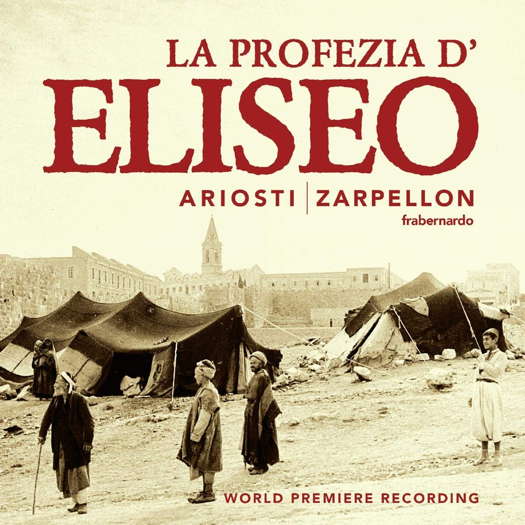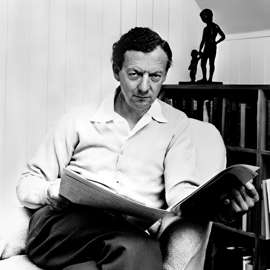- Teodor Zgureanu
- Corigliano
- Pëtr Il'ic Cajkovskij
- Bosnia
- Jean Belmont Ford
- fortepiano
- Fairfield Halls
- Rossini: Zelmira

An Operatic Oratorio
Attilio Ariosti's 'La Profezia d'Eliseo', recommended by GIUSEPPE PENNISI
'The rendering is very good: ensemble and singers are Baroque specialists.'
Writing in this magazine, I have often underlined the differences between Roman and Bolognese baroque, on the one hand, and Venetian and Neapolitan Baroque, on the other. The former is terse, dry and dramatic. The latter is lush and flowery. The Bolognese and Roman Baroque had considerable influence on Handel, who lived and worked in Rome in his youth. It also had an impact on Austrian and German Baroque because some of Handel's musicians worked at the Vienna and Berlin Courts.
One of these is Attilio Ariosti (1666-1729). La profezia d'Eliseo nell'assedio di Samaria is one of his major works. This CD is a world premiere recording. The CD booklet has very little information on Ariosti. The music history books on my shelves tell me that Ariosti was born into the middle class. He became a monk in 1688 at age twenty-two, but soon obtained permission to leave the order and become a composer in the court of the Duke of Mantua and Monferrato. He became a deacon in 1692, the same year he achieved the post of organist at Santa Maria dei Servi in Bologna.
In 1697, he went to Berlin at the request of Sophia Charlotte of Hanover, Queen of Prussia, a great-granddaughter of James I of England and daughter of the Electress Sophia of Hanover, an enlightened patroness of the arts with a keen interest in music. After enjoying the favour of the Queen, Ariosti wrote and collaborated in the writing of a number of stage works performed for the court in Berlin. He resided in Berlin as the court composer until 1703. A portrait painting of Ariosti by Anthoni Schoonjans (1655-1726) is still present in Charlottenburg Palace.
His first opera was performed in Venice in 1697. From 1703 to 1709 he was the General Austrian Agent for Italy, during the reign of Joseph I. After 1716, he achieved enormous success in Paris and London. In London, he shared with Georg Friedrich Handel and Giovanni Bononcini the directorship of the Royal Academy of Music. In 1724 he published a Collection of Cantatas, and Lessons for the Viola d'Amour, which he sold by subscription. This publication may have been the most successful sale of music by subscription in the eighteenth century.
Although he could sing, write drama, play the cello and harpsichord; his favorite instrument was the viola d'amore, for which he wrote twenty-one solo sonatas. These are usually called the Stockholm Sonatas, as the sole surviving source for most of them is in the Statens Musikbibliotek in Stockholm, Sweden.
Thus, he was a major personality of the Baroque. La profezia d'Eliseo nell'assedio di Samaria is an oratorio in two parts; it is a very dramatic opera, based on a gruesome Bible episode. There was mass starvation during the Samaria siege and mothers had to feed themselves by eating their new born babies until the prophet Eliseo brought a very heavy night rain that made the enemies run away and leave behind all kind of goodies - food, gold, silver, etc. After the rain, Samaria's land became fertile again. The libretto is by Giovanni Battista Neri. It seems that young Handel was involved in a few numbers of the score.
In this premiere recording, the orchestra is the Lorenzo Da Ponte Ensemble, conducted by Roberto Zarpellon. The singers, in a variety of roles, are Marie-Sophie Pollak and Marcela Redaelli, sopranos, Matteo Pigato, counter-tenor, Alessio Tosi, tenor and Mauro Borgioni, bass.
The oratorio opens with two highly dramatic duets linked by recitative: two mothers compelled by the starvation to eat their own babies.
Listen — Ariosti: Prole tenera (La Profezia d'Eliseo)
(FB 2104397 CD1 track 4, 0:40-1:35) ℗ 2021 fra bernardo :
Eventually, one does this; the other refuses. Eliseo calms the situation with two arias that are the central point of the first part: two vast arias full of hope for Samaria and its people.
Listen — Ariosti: Chi col senso, e col pensiero (La Profezia d'Eliseo)
(FB 2104397 CD1 track 18, 0:49-1:27) ℗ 2021 fra bernardo :
Listen — Ariosti: Chi col senso, e col pensiero (La Profezia d'Eliseo)
(FB 2104397 CD1 track 21, 2:19-3:16) ℗ 2021 fra bernardo :
In the second part, the two women have important roles but other characters enter the drama; they are mostly sceptical about Eliseo's prophecy until the heavy rains turn the situation around and the enemies rush away.
Eliseo delivers a grand aria to thank God Almighty.
Listen — Ariosti: Sì sì consolati (La Profezia d'Eliseo)
(FB 2104397 CD2 track 13, 3:49-4:38) ℗ 2021 fra bernardo :
The ending is a concertato of the whole company of laude to God for Israel's triumph.
The rendering is very good: ensemble and singers are Baroque specialists.
I recommend the CD as a way to get acquainted with an important composer, now rarely performed even in Baroque Festivals.
Copyright © 4 March 2022
Giuseppe Pennisi,
Rome, Italy

CD INFORMATION - ARIOSTI: LA PROFEZIA D'ELISEO



